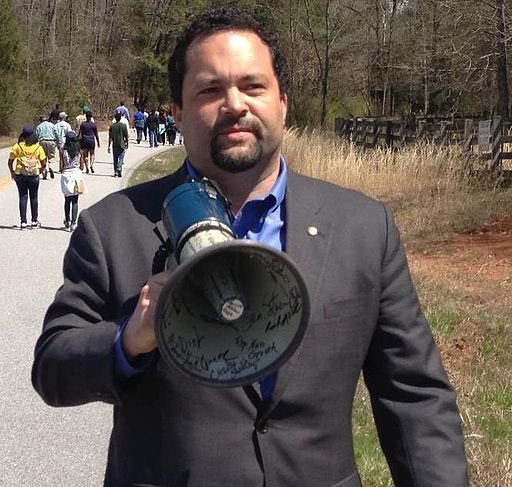
July 24, 2017; The Intercept
As Trump has recently realized, captured simply when he spoke with the New York Times, “Once you get something, it’s awfully tough to take it away.” He’s referring, of course, to the sense that, in the U.S., many of us are getting attached to the idea of having access to adequate healthcare. The Intercept recently reported that a new Associated Press poll found that 62 percent of people in the U.S. “now agree the federal government has a responsibility to provide health coverage to all Americans, up from 52 percent in March.”
Though it may not come from political leadership at the federal level any time soon, the states, as we’ve seen with other important issues, are taking the lead in giving the people what they want. One state in particular, Maryland, is primed to make some headway in universal health coverage. As Dan Morhaim, a House of Delegates member and physician, said, “I think the political system would be willing to take that on if the person who argued for it won the election.”
Luckily, there is a “prominent gubernatorial candidate” in Maryland’s upcoming election who may fit the bill: former NAACP president Ben Jealous, who has “ardently endorsed single-payer.” In a recent event where Jealous received an endorsement from Sen. Bernie Sanders, the candidate said, “We have the opportunity in this state to make sure that we don’t have any more neighbors burying loved ones because they didn’t have access to health care.”
If elected, Jealous would have a lot on his side in establishing a single-payer health system.
- Maryland’s legislature has a robust Democratic supermajority.
- It has no two-thirds requirement to raise taxes.
- It has no budgeting rules mandating state spending.
- While states need federal waivers to incorporate programs like Medicare into a state-run program, Maryland is the only state to already have one.
- The federal waiver enables a unique system known as all-payer rate setting.
- Maryland is the only state where all hospitals must charge the same rate for services to patients, regardless of insurance.
- Maryland has been setting hospital reimbursement rates for 40 years through its Health Services Cost Review Commission.
- So far, its system has created the lowest rate of growth in hospital costs in the U.S.
- In 2014, Maryland added global budgeting, where every hospital gets a total revenue number for the year, which incentivizes hospitals on better outcomes, or keeping people healthy rather than treating illnesses.
- According to a January Health Affairs study, the state is “meeting or exceeding” its goals.
All-payer rate setting, wherein “all third parties pay the same for hospital services,” has served as the basis of universal health care in several industrialized nations, including France, Germany, Japan, Switzerland, and The Netherlands. They have found that it controls costs “far better than America’s fragmented system.” All-payer reduces overhead for hospitals and insurers, and the Affordable Care Act caps the profits insurers can make; both lower hospital costs, which results in lower premiums.
Joshua Sharfstein, a Maryland physician and Associate Dean for Public Health Practice and Training at the Johns Hopkins Bloomberg School of Public Health, said, “I think you can combine alternative payment approaches with single payer, but you don’t hear about that much…In some ways, it’s more radical [than single payer] if you’re able to get the incentives right.”
Sign up for our free newsletters
Subscribe to NPQ's newsletters to have our top stories delivered directly to your inbox.
By signing up, you agree to our privacy policy and terms of use, and to receive messages from NPQ and our partners.
Shelly Hettleman, a member of the House of Delegates from Baltimore, said, “I am not hearing a groundswell of support for a single-payer system or radically redoing what we currently do. My constituents want to fix the system rather than totally reinvent it.”
However, that’s exactly what Maryland could potentially do: “reinvent health care outcomes by merely tweaking the system.”
This may be that rare strategy that crosses party lines. Kansas Republican Jerry Moran, whose opposition to the federal health bill effectively killed it, said, “We must now start fresh with an open legislative process to develop innovative solutions that provide greater personal choice, protections for pre-existing conditions, increased access and lower overall costs for Kansans.”
The Intercept reports that “even Vincent DeMarco, who flat-out rejected the notion of state-level single payer, agreed. ‘If we can do that, we can achieve the same goals in a way that’s doable,’ DeMarco said.”
Further, a recent Baltimore Sun op-ed by Morhaim on decoupling health insurance from employment “got a wider response than he’s ever seen. ‘My email box flooded,’ Morhaim said.”
Other states are already looking at Maryland as a model: “Pennsylvania has adopted global budgeting for rural hospitals” and “Vermont moved to an all-payer accountable care organization, where providers are paid based on health outcomes for the population.” But, as The Intercept concluded, “the true test of Maryland-style all payer is whether it can support universal coverage for every resident.” However, Maryland already has a low number of uninsured—6.7 percent in 2015.
Jealous would be expected “to put single payer at the top of his agenda,” and he’s an experienced and successful politician, having “helped legalize same-sex marriage, abolish the death penalty, and pass a state version of the DREAM Act.” In fact, Democratic primary opponents are already moving in his direction. Alec Ross, a Hillary Clinton adviser, supports a public, state-based option, and State Senator Rich Madaleno said he would treat healthcare as a human right.”—Cyndi Suarez











